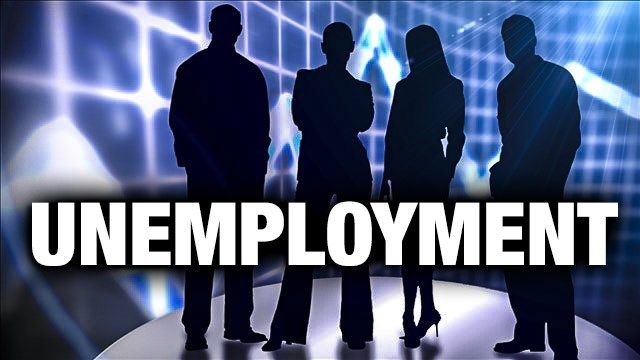WASHINGTON – Unemployment rates were lower in May in 21 states and the District of Columbia, higher in 1 state, and stable in 28 states, the U.S. Bureau of Labor Statistics (BLS) reported today. All 50 states and the District had jobless rate decreases from a year earlier. The national unemployment rate declined by 0.3 percentage point over the month to 5.8% and was 7.5 points lower than in May 2020.
Nonfarm payroll employment increased in 14 states, decreased in 1 state, and was essentially unchanged in 35 states and the District of Columbia in May 2021. Over the year, nonfarm payroll employment increased in all states and the District.
This news release presents statistics from two monthly programs. The civilian labor force and unemployment data are modeled based largely on a survey of households. These data pertain to individuals by where they reside. The employment data are from an establishment survey that measures nonfarm employment, hours and earnings by industry. These data pertain to jobs on payrolls defined by where the establishments are located. For more information about the concepts and statistical methodologies used by these two programs, see the Technical Note.
Unemployment
Hawaii had the highest unemployment rate in May, 8.1%. The next highest rates were in New Mexico, 8.0%, and California, 7.9%. New Hampshire had the lowest jobless rate, 2.5%, closely followed by Nebraska and Vermont, 2.6% each. In total, 27 states had unemployment rates lower than the U.S. figure of 5.8%, 12 states and the District of Columbia had higher rates, and 11 states had rates that were not appreciably different from that of the nation. (See tables A and 1.)
In May, Delaware and Rhode Island had the largest over-the-month unemployment rate decreases (-0.5 percentage point each), followed by Connecticut, Hawaii, New York and South Carolina (-0.4 point each). Ohio had the only rate increase in May (+0.3 percentage point). Twenty-eight states had jobless rates that were not notably different from those of a month earlier, though some had changes that were at least as large numerically as the significant changes. (See table B.)
The largest unemployment rate decrease from May 2020 occurred in Nevada (-16.7 percentage points). The next largest decreases were in Michigan (-15.8 percentage points), Hawaii (-13.8 points), and New Hampshire (-10.9 points). The smallest over-the-year jobless rate decreases occurred in the District of Columbia (-1.7 percentage points) and New Mexico (-2.0 points). (See table C.)
Nonfarm Payroll Employment
Nonfarm payroll employment increased in 14 states, decreased in 1 state, and was essentially unchanged in 35 states and the District of Columbia in May 2021. The largest job gains occurred in California (+104,500), Florida (+39,900) and Texas (+34,400). The largest percentage increases occurred in New Mexico (+1.1%), Nevada (+0.8%) and Hawaii (+0.7%). Employment decreased in Wyoming (-3,800, or -1.4%). (See tables D and 3.)
Over the year, nonfarm payroll employment increased in all states and the District of Columbia. The largest job increases occurred in California (+1,220,200), New York (+882,500) and Texas (+804,200). The largest percentage increases occurred in Nevada (+19.2%), Michigan (+16.8%), and Rhode Island (+13.0%). (See table E.)
_____________
The Metropolitan Area Employment and Unemployment news release for May is
scheduled to be released on Wednesday, June 30, 2021, at 10:00 a.m. (ET).
The State Employment and Unemployment news release for June is scheduled
to be released on Friday, July 16, 2021, at 10:00 a.m. (ET).
__________________________________________________________________________ |
Coronavirus (COVID-19) Pandemic Impact on May 2021
Establishment and Household Survey Data
BLS has continued to review all estimation and methodological procedures for the establishment survey, which included the review of data, estimation processes, the application of the birth-death model and seasonal adjustment. Business births and deaths cannot be adequately captured by the establishment survey as they occur. Therefore, the Current Employment Statistics (CES) program uses a model to account for the relatively stable net employment change generated by business births and deaths. Due to the impact of COVID-19, the relationship between business births and deaths is no longer stable. Typically, reports with zero employment are not included in estimation. For the April final and May preliminary estimates, CES included a portion of these reports in the estimates and made modifications to the birth-death model. In addition, for both months, the establishment survey included a portion of the reports that returned to reporting positive employment from reporting zero employment. For more information, see www.bls.gov/web/empsit/cesbd.htm.
In the establishment survey, workers who are paid by their employer for all or any part of the pay period including the 12th of the month are counted as employed, even if they were not actually at their jobs. Workers who are temporarily or permanently absent from their jobs and are not being paid are not counted as employed, even if they are continuing to receive benefits. The length of the reference period does vary across the respondents in the establishment survey; one-third of businesses have a weekly pay period, slightly over 40 percent a bi-weekly, about 20 percent semi-monthly, and a small amount monthly.
For the May 2021 estimates of household employment and unemployment from the Local Area Unemployment Statistics (LAUS) program, BLS continued to implement level-shift outliers in the employment and/or unemployment inputs to the models, based on statistical evaluation of movements in each area’s inputs. Both the Current Population Survey inputs, which serve as the primary inputs to the LAUS models, and the nonfarm payroll employment and unemployment insurance claims covariates were examined for outliers. The resulting implementation of level shifts preserved movements in the published estimates that the models otherwise would have discounted, without requiring changes to how the models create estimates at other points in the time series.
The “Frequently asked questions” document at www.bls.gov/covid19/employment-situation-covid19-faq-may-2021.htm extensively discusses the impact of a misclassification in the household survey on the national estimates for May 2021. Despite the considerable decline in its degree relative to prior months, this misclassification continued to be widespread geographically, with BLS analysis indicating that most states again were affected to at least some extent. However,
according to usual practice, the data from the household survey are accepted as recorded. To maintain data integrity, no ad hoc actions are taken to reclassify survey responses. Hence, the household survey estimates of employed and unemployed people that serve as the primary inputs to the state models were affected to varying degrees by the misclassification, which in turn affected the official LAUS estimates for May 2021.
Household data for Puerto Rico are not modeled, but rather are derived from a monthly household survey similar to the Current Population Survey. Due to the effects of the pandemic and efforts to contain the virus, Puerto Rico had not been able to conduct its household survey for March or April 2020. Since data collection resumed effective May 2020, the Puerto Rico Department of Labor has reported a misclassification in its household survey similar in nature to the misclassification in the Current Population Survey. |
- State Employment and Unemployment Technical Note
- Table 1. Civilian labor force and unemployment by state and selected area, seasonally adjusted
- Table 2. Civilian labor force and unemployment by state and selected area, not seasonally adjusted
- Table 3. Employees on nonfarm payrolls by state and selected industry sector, seasonally adjusted
- Table 4. Employees on nonfarm payrolls by state and selected industry sector, not seasonally adjusted









